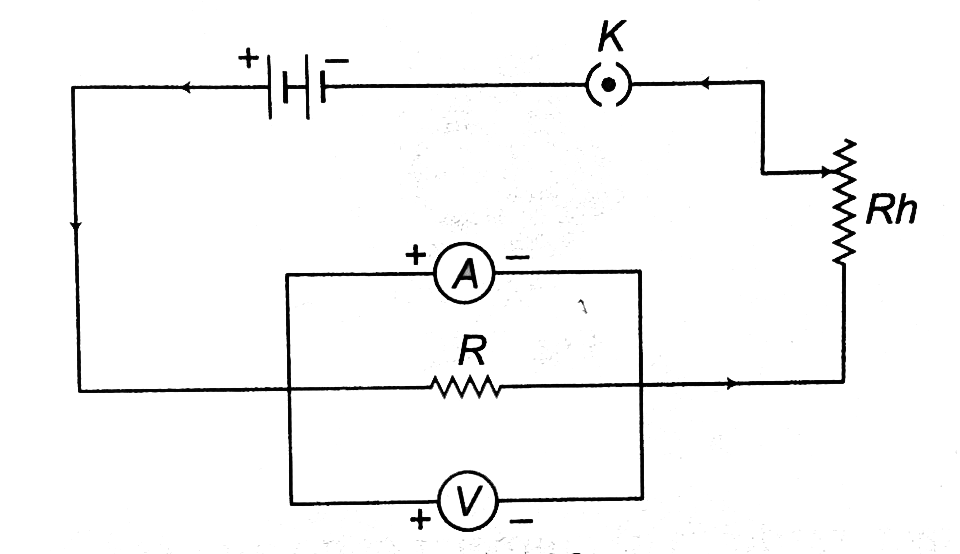Assertion : Voltmeter is connected in parallel with the circuit
Reason : Resistance of a voltmeter is very large.
If both assertion and reason are true and reason is the correct explanation of assertion
If both assertion and reason are true but reason is not the correct explanation of assertion
If assertion is true but reasonb is false
If both assertion and reason are false.
The correct Answer is:A
Both assertion and reason true and reason is true correct explanation of assertion. A voltmeter is always connected in parallel. This has of course a large resistance. The assertion and reason are correct and it is the correct explanation.
Topper's Solved these Questions
Similar Questions
An ammeter and a voltmeter are connected in series to a battery with an emf ξ=6.0V. When a certain resistance is connected in parallel with the voltmeter, the readings of the latter decreases η=2.0 times, whereas the readings of the ammeter increase the same number of times, Find the voltmeter readings after the connection of the resistance.
View SolutionWhat result do you expect in above experiment if by mistake, ammeter is connected in parallel with voltmeter and resistance as shown in figure?
 .View Solution
.View Solution
Knowledge Check
- Question 1 - Select One
Which statement/statement is/are correct?
1. An ammeter is connected in series in a circuit and a voltmeter is connected in parallel.
2. An ammeter has a high resistance.
3. A voltmeter has a low resistance.A1,2,3B1,2C2,3D1 - Question 2 - Select One
Assertion: A voltmeter must b e connected in parallel in a circuit and it should have a high resistance.
Reason: The voltmeter in the circuit must not affect the P.D. it is to measure.AIf both Assertion & Reason are True & the Reason is a correct explanantion of the AssertionBIf both Assertion & Reason True but Reason is not a correct explanation of the AssertionCIf Assertion is True but the Reason is FalseDIf both Assertion & Reason are False. - Question 3 - Select One
Assertion : An ammeter is always connected in series whereas a voltmeter is connected in parallel.
Reason : An ammeter is a low-resistance galvanometer while a voltmeter is high resistance galvanometer.AAssertion is True, Reason is True, Reason is a correct explanation for AssertionBAssertion is True, Reason is True, Reason is not a correct explanation for AssertionCAssertion is True, Reason is FalseDAssertion is False, Reason is True
By mistake, a voltmeter is connected in series and an ammeter is connected in parallel, with a resistance in an electrical circuit. What will happen to the instruments?
View SolutionAssertion (A) : An ammeter is connected in series of the current carrying circuit but a voltmeter is connected in parallel across those two points, potential difference between which is to be measured.
Reason (R) : Resistance of an ideal ammeter is zero but the resistance of an ideal voltmeter is infinite.View SolutionA voltmeter and an ammeter are connected in the circuit as shown. Resistance of ammeter is say R10 and that of voltmeter is 10R. Then
 View Solution
View SolutionBy mistake a voltmeter is connected in series an an ammeter is connected in parallel with a resistance in an electrical circuit. What will happen to the instrument?
View SolutionAssertion : If by mistake, a voltmeter is connected in series, then circuit will burn.
Reason : Current will drastically decrease in the circuit.View Solution

